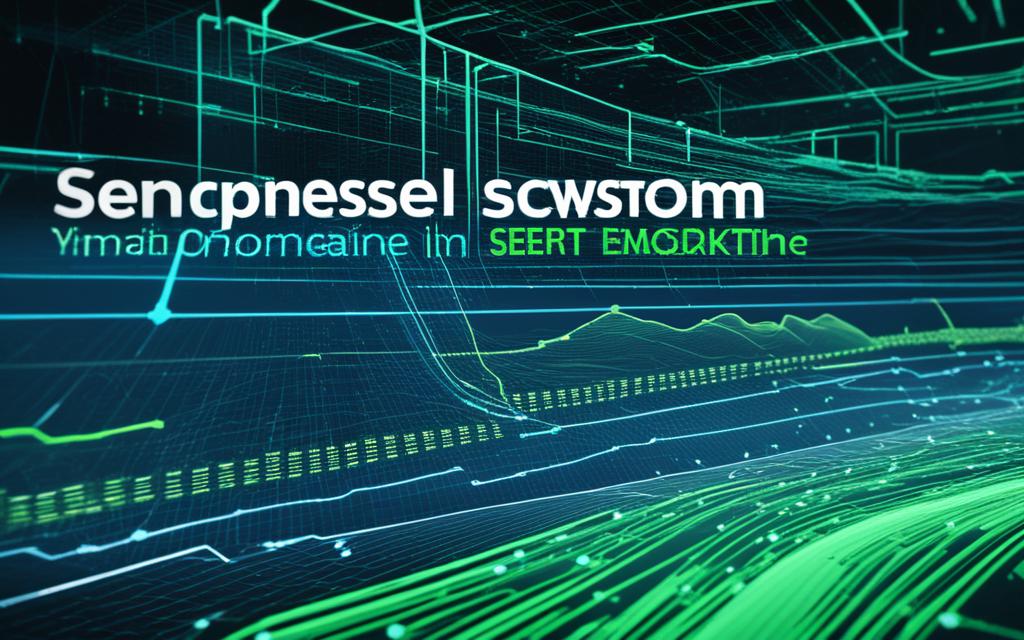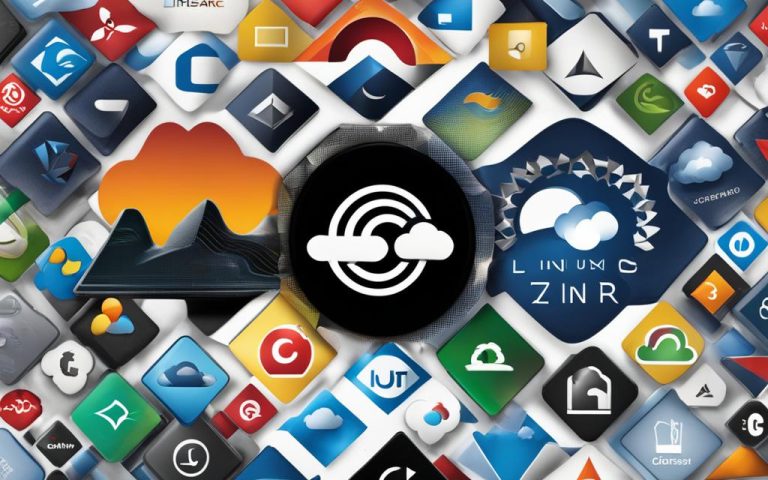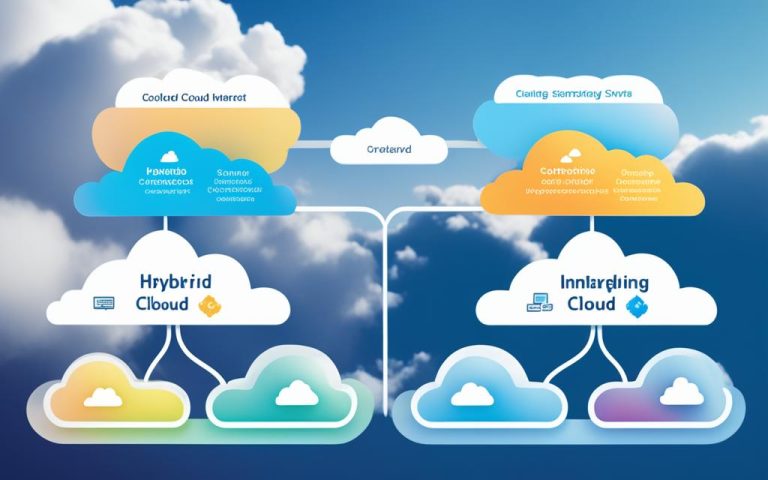Real-time operating systems (RTOS) are a key component in cloud networking scenarios, providing efficiency and reliability for critical applications. Whether it’s ensuring precise timing or handling multiple processes, RTOSes play a crucial role in delivering timely responses to events. Their applications span a wide range of industries, including aviation, automotive, healthcare, and telecommunications.
In this article, we will explore the features and functionality of RTOSes, their role in cloud networking, and popular RTOS software options available in the market. By understanding the benefits and considerations involved in choosing an RTOS, businesses can optimize their operations and leverage the advantages of real-time performance.
What is a Real-time Operating System (RTOS)?
A real-time operating system (RTOS) is a specialized operating system that guarantees real-time applications the ability to meet specific capabilities within a designated deadline. While it functions similarly to general-purpose OSes, an RTOS is designed to prioritize and fulfill precise timing requirements. RTOSes excel in handling multiple processes concurrently and ensuring that tasks respond to events within predictable time limits. They are commonly used in embedded systems and have direct communication with the hardware they control. RTOSes offer lightweight, high-performance solutions with determinism, safety, and security as core features. They enable features such as multitasking, process thread prioritization, and interrupt levels.
In contrast to general-purpose OSes, RTOSes are purpose-built for meeting deadlines and maintaining the desired responsiveness of real-time applications. By enforcing strict timing requirements, RTOSes provide a foundation for reliable and efficient operations in time-critical scenarios.
“An RTOS guarantees timely response to events and precise execution of time-sensitive tasks.”
Key Features of Real-time Operating Systems (RTOS)
RTOSes offer an array of features that contribute to their effectiveness in managing real-time applications:
- Scheduling: RTOSes employ advanced scheduling algorithms to ensure tasks are executed within their designated time limits.
- Task Prioritization: Processes in an RTOS are assigned priorities, dictating the order in which they are executed.
- Interrupt Handling: RTOSes efficiently handle hardware interrupts, allowing for rapid response and seamless integration with the underlying hardware.
- Efficient Resource Management: RTOSes optimize the allocation and utilization of system resources, ensuring efficient operation and minimal wastage.
- Low Latency: RTOSes aim to minimize the latency between events and task execution, enabling real-time responsiveness.
Together, these features make RTOSes an indispensable tool for managing time-critical tasks in a wide range of embedded system applications.
Comparison Between Real-time Operating Systems (RTOS) and General-Purpose Operating Systems (GPOS)
To understand the significance of RTOSes, it is essential to highlight the differences between RTOSes and general-purpose OSes (GPOS).
| Real-time Operating Systems (RTOS) | General-Purpose Operating Systems (GPOS) |
|---|---|
| Guarantees timely response to events and tasks within specified deadlines. | May experience latency or synchronization issues, resulting in potential non-deterministic response times. |
| Prioritizes real-time execution and deterministic responses. | Optimizes for multitasking and resource sharing, with less emphasis on precise timing and responsiveness. |
| Lightweight and designed for embedded systems. | Multipurpose OSes designed for a variety of applications, including desktops, servers, and mobile devices. |
By differentiating RTOSes from GPOS, it becomes evident that RTOSes are specifically tailored to meet the stringent timing requirements of real-time applications. They ensure precise and predictable execution of tasks, making them ideal for critical systems where reliable and consistent performance is paramount.
How does an RTOS work?
Real-time operating systems (RTOS) are essential in ensuring efficient and reliable performance for critical applications. These operating systems handle tasks and processes in a deterministic and prioritized manner, allowing for precise timing and predictable response times. Let’s take a closer look at how RTOSes work and their key components.
Differentiating Soft and Hard Real-Time Operating Systems
RTOSes can be classified into two main categories: soft real-time systems and hard real-time systems. Soft RTOSes operate within a few hundred milliseconds, while hard RTOSes provide response times within tens of milliseconds.
Soft RTOSes are typically used in systems where time-based executions are less critical. They offer a level of flexibility and can handle tasks with varying response times. On the other hand, hard RTOSes are utilized in systems that require important time-based executions and must guarantee precise timing. These systems have stringent deadlines and require immediate and predictable responses to events.
The Role of the Kernel and Scheduling
The kernel is a fundamental component of an RTOS, responsible for managing the system’s resources and ensuring optimal performance. It interacts with the rest of the operating system and the hardware.
RTOSes employ various scheduling algorithms to allocate CPU time to different tasks and processes. These algorithms prioritize time-critical tasks and ensure they meet their deadlines. Common scheduling policies include rate monotonic scheduling (RMS) and earliest deadline first (EDF).
Monolithic and Microkernel Architecture
RTOSes can have two different architectural designs: monolithic and microkernel.
In monolithic architecture, the entire operating system, including the kernel and various system components, is encapsulated in a single image. This design offers efficiency but can be challenging to modify or debug.
Microkernel architecture, on the other hand, separates the kernel from other system components, allowing for modularity and easier maintenance. The microkernel only contains essential functions, while additional services run as separate processes. This architecture offers flexibility and scalability.
“RTOSes handle tasks and processes in a deterministic and prioritized manner, with a kernel interacting with the rest of the operating system and the hardware.”
Now that we have a better understanding of how RTOSes work, let’s explore the differences between RTOSes and general-purpose operating systems (GPOS) in the next section.

RTOS vs. GPOS
In the realm of operating systems, a fundamental distinction exists between real-time operating systems (RTOS) and general-purpose operating systems (GPOS). While both types can handle multiple tasks concurrently, their suitability for time-sensitive applications differs significantly.
General-purpose OSes such as Windows or Unix are designed to cater to a variety of applications and user needs. Although they excel at multitasking, they often struggle with latency and synchronization issues. As a result, their response times in time-sensitive scenarios can be nondeterministic and fall under the category of soft real-time.
On the other hand, RTOSes provide a deterministic, hard real-time response with quick reaction times. These operating systems are purpose-built for systems that require precise and timely execution of tasks and events within short time frames. RTOSes offer unmatched accuracy and reliability, making them ideal for embedded systems where synchronization is critical.
“RTOSes guarantee deterministic, hard real-time responses, ensuring accurate and timely execution of tasks and events within tight deadlines.”
By emphasizing synchronization and minimizing latency, RTOSes enable critical systems to function without compromising performance. Their ability to respond quickly to time-sensitive events makes them indispensable in domains such as aerospace, automotive, medical equipment, and industrial automation.
It is important to note that RTOSes excel in situations where deterministic and predictable timing is crucial, while GPOSes are better suited for general computing tasks that do not require real-time responsiveness.
Let’s visualize the main differences between RTOS and GPOS in the following table:
| RTOS | GPOS |
|---|---|
| Provides real-time, hard deterministic response | Offers potential soft real-time response |
| Minimizes latency and ensures quick reaction times | May experience latency and synchronization issues |
| Designed for time-critical applications | More suitable for general-purpose computing |
| Suitable for embedded systems | Used in a wide range of computing devices |
Popular RTOS Software and Factors for Choosing an OS
When it comes to real-time operating systems (RTOS), there are several popular options available in the market. Some of the widely used RTOS software includes FreeRTOS, QNX Neutrino, VxWorks, and SafeRTOS. These software solutions have gained recognition in various industries for their reliability, performance, and extensive feature sets.
Choosing the right RTOS for your application requires careful consideration of several factors. Let’s explore the key criteria that should be taken into account:
Responsiveness
An RTOS should offer high responsiveness to ensure timely execution of critical tasks. The ability to quickly respond to events and meet stringent deadlines is of paramount importance in real-time systems.
Safety Certifications
In safety-critical applications, such as medical devices or aerospace systems, it’s crucial to select an RTOS that has undergone rigorous safety certifications. Compliance with standards like DO-178C for avionics or IEC 62304 for medical devices adds an extra layer of assurance.
System Resources
The efficient utilization of system resources is vital for optimizing the performance of an RTOS. Consider the memory footprint, CPU utilization, and power consumption requirements of your application to ensure compatibility with the available hardware.
Security
In today’s interconnected world, security is a top concern. Look for an RTOS that provides robust security features, such as secure booting, data encryption, and access control mechanisms, to safeguard your system from potential vulnerabilities.
Compatibility
Compatibility with your chosen hardware platform, development tools, and middleware is essential for seamless integration and efficient development. Ensure that the RTOS you select supports the required hardware architectures and interfaces.
Long-Term Use and Support
Consider the long-term viability of the RTOS software. Evaluate the track record of the vendor, the availability of continuous support and updates, and the overall community engagement to ensure that your chosen RTOS will meet your future requirements.
Table: Comparison of Popular RTOS Software
| RTOS Software | Features |
|---|---|
| FreeRTOS | – Open-source – Scalable architecture – Portable and widely supported |
| QNX Neutrino | – High-performance real-time capabilities – Microkernel architecture – Robust security features |
| VxWorks | – Proven reliability – Extensive industry adoption – Broad hardware support |
| SafeRTOS | – Safety-certified – Small memory footprint – Predictable and deterministic behavior |
It’s important to evaluate these factors and thoroughly analyze the requirements of your specific application before making a decision. Choosing the right RTOS can significantly impact the performance, reliability, and security of your real-time system.
Conclusion
Real-time operating systems (RTOS) play a vital role in cloud networking scenarios, providing enhanced efficiency and reliability for critical applications. With their ability to ensure precise timing, handle multiple processes, and guarantee timely response to events, RTOSes are commonly used in embedded systems across various industries, including aviation, automotive, healthcare, and telecommunications.
Popular RTOS software options like FreeRTOS, QNX Neutrino, and VxWorks offer different features and capabilities, allowing users to choose the most suitable solution for their specific requirements. When selecting an RTOS, factors such as responsiveness, safety certifications, system resources, security, and compatibility should be carefully considered to ensure optimal performance.
As cloud networking continues to experience a growing demand for real-time performance, RTOSes remain crucial in enabling reliable and efficient operations. By providing improved efficiency, reliability, and precise timing, RTOSes facilitate the seamless execution of critical applications, making them a valuable asset in today’s interconnected world.
FAQ
What is a real-time operating system (RTOS)?
A real-time operating system (RTOS) is an OS that guarantees real-time applications a certain capability within a specified deadline. It functions similarly to general-purpose OSes but is designed to meet specific timing requirements. RTOSes handle multiple processes concurrently and ensure that tasks respond to events within predictable time limits. They are commonly used in embedded systems and communicate with the hardware. RTOSes are lightweight, high-performance, and provide determinism, safety, and security. They have features like multitasking, process thread prioritization, and interrupt levels.
How does an RTOS work?
RTOSes are divided into soft and hard real-time systems. Soft RTOSes operate within a few hundred milliseconds, while hard RTOSes provide predictable response times within tens of milliseconds. Soft RTOSes are used in systems where time-based executions are less critical, while hard RTOSes are used in systems that require important time-based executions. RTOSes handle tasks and processes in a deterministic and prioritized manner, with a kernel interacting with the rest of the operating system and the hardware. They can have either a monolithic or microkernel architecture.
How does an RTOS compare to a general-purpose OS (GPOS)?
General-purpose OSes like Windows or Unix can handle multiple tasks concurrently but are not ideal for time-sensitive applications. They have latency and synchronization issues and provide a potential nondeterministic, soft real-time response. In contrast, RTOSes provide a deterministic, hard real-time response with quick reaction times. They are designed for systems that need to respond to events or tasks within short time frames. RTOSes are more suitable for embedded systems and ensure accurate and timely execution.
What are some popular RTOS software options and factors to consider when choosing an OS?
Some popular RTOS software includes FreeRTOS, QNX Neutrino, VxWorks, and SafeRTOS. When choosing an RTOS, factors such as responsiveness, safety certifications, available system resources, security, and compatibility should be considered. RTOSes should be responsive, have safety certifications, and utilize the appropriate system resources. They can be either free, open-source options or commercial offerings. Long-term use and potential for future support and updates should also be taken into account.



















